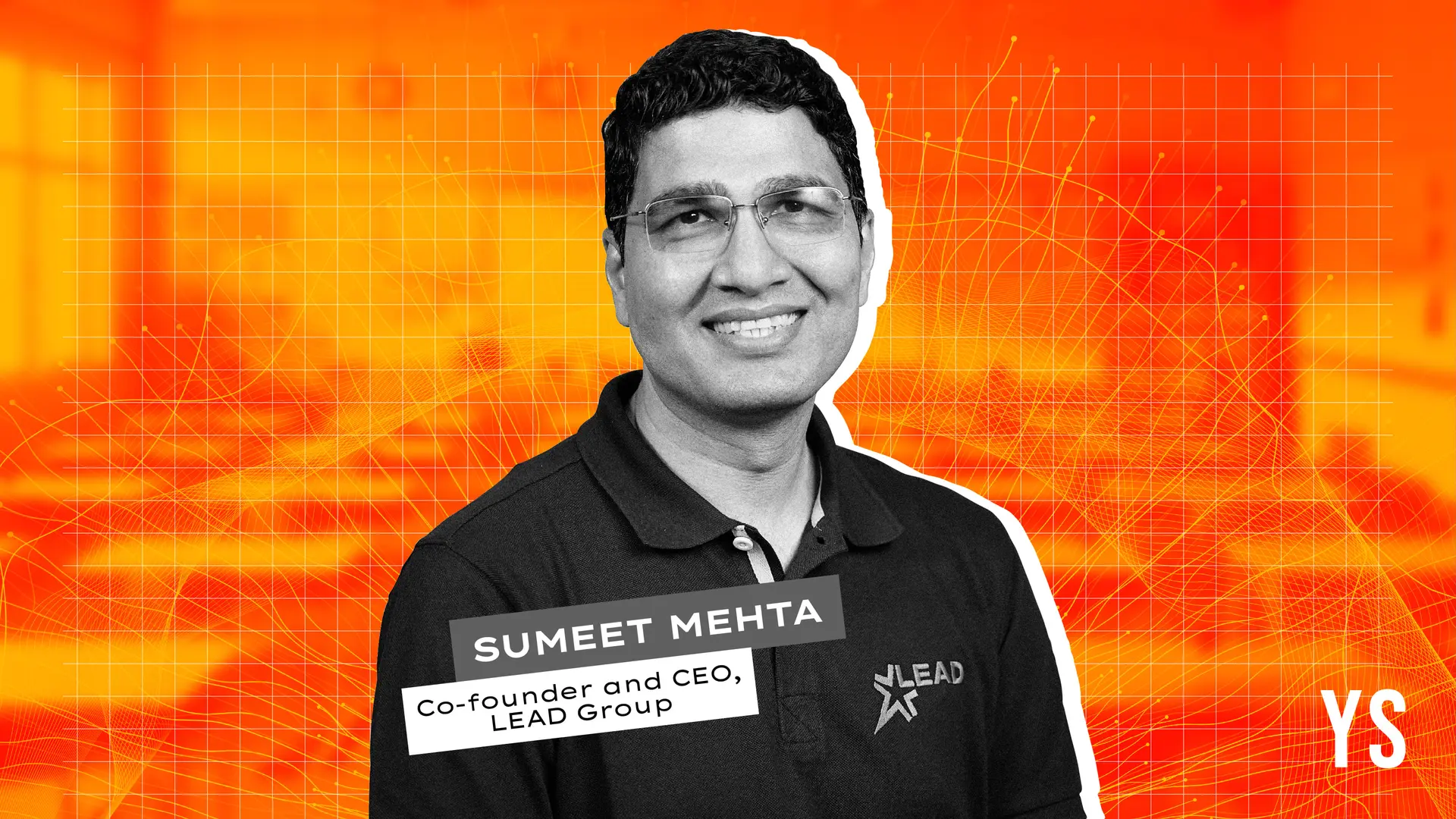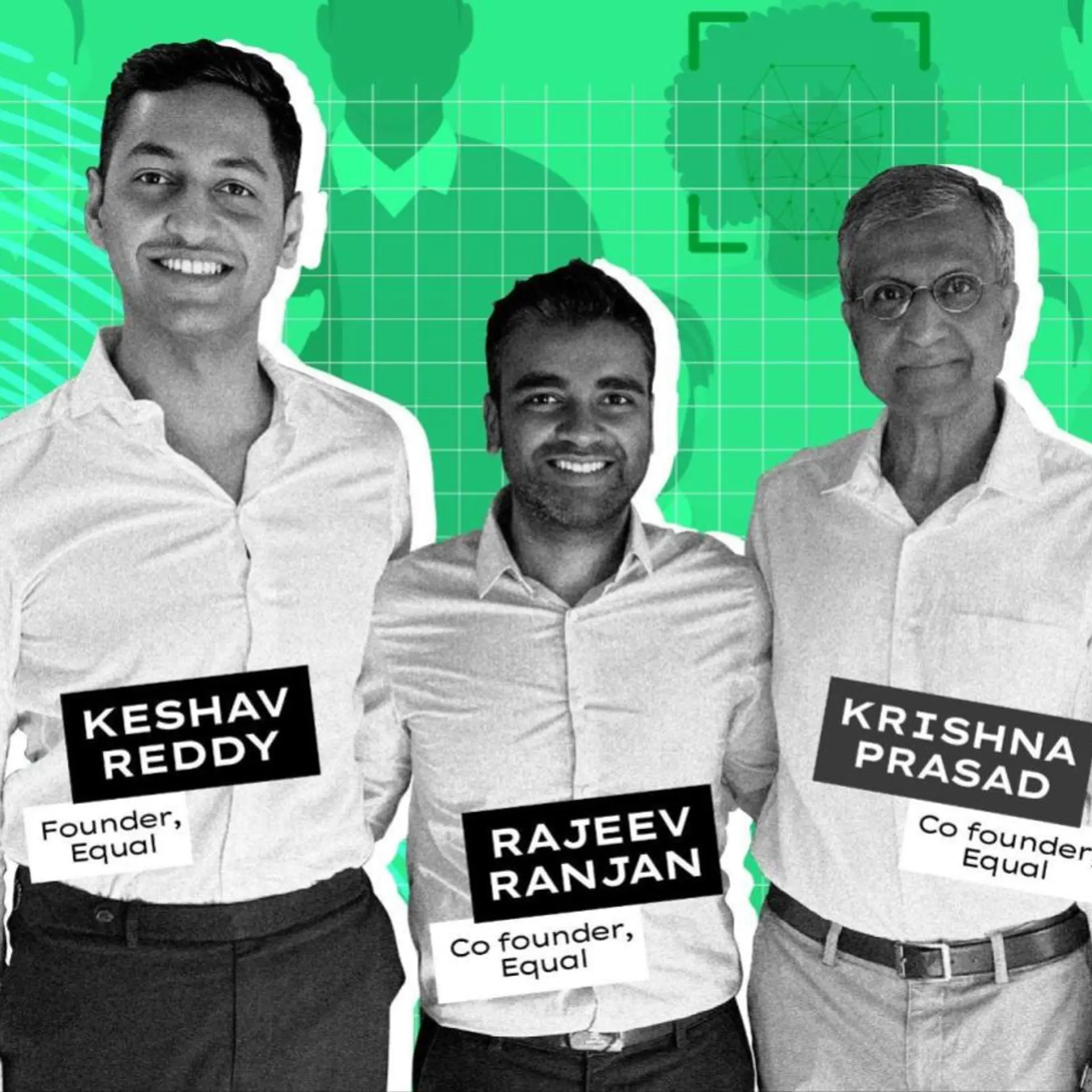Edtech unicorn LEAD’s Sumeet Mehta advocates public-private partnerships to improve India’s schools
Sumeet Mehta, Co-founder and CEO of LEAD Group, makes a case for public-private partnerships to improve India’s K-12 education. He highlights the need for accountability, innovation, and technology to improve student outcomes and drive sustainable, large-scale transformation in schools.
Learning begins in schools—period. The seven hours students spend each day navigating the K-12 system shape their academic foundation and future prospects. Without a strong foundation, students struggle to bridge the gap between their potential and the skills needed to succeed in an increasingly competitive world.
This is where public-private partnerships come in—an approach where experienced private players can take charge of some government schools with an outcome-driven model, says Sumeet Mehta, Co-founder and CEO of Group, a school-focused edtech unicorn.
“There are 1.5 million schools running, and students are studying—but I don’t know how much they are learning,” he says, adding that out of those one million are government schools.
“My parents went to a government school, and it was quite good, but the quality has deteriorated over time. I wonder if the government should focus on policy and regulation while entrusting operations to qualified private players, holding them accountable for outcomes,” notes Mehta.
In a conversation with YourStory, Mehta discussed public-private partnerships in school education, the need for meaningful improvements in student learning outcomes, and the role of technology in personalisation. He also shared insights on LEAD’s growth strategy and innovation plans.
Edited excerpts from the interview:
YourStory (YS): With lakhs of schools across the country, what can be done at the school level to drive meaningful change?
Sumeet Mehta (SM): There is no doubt in my mind that if we have to transform, we need three to four players.
Why don’t we try a public-private partnership like partnering with LEAD to manage 500 schools. The government spends between Rs 30,000-50,000 per student annually. I am saying you give me two-thirds of it–Rs 20,000. I’ll definitely be able to deliver 2X outcomes. It’s a very good ROI.
But, the challenge is twofold. One, there is this element of mistrust between public-private. Second, whenever the government opens, the people who come in and start running are not necessarily the people who can do a great job of it.
Government-run schools haven’t worked in 70 years, so it’s time for a different approach. Start small with a public-private partnership, giving the top 10 K-12 players 500 schools each. After two years, evaluate outcomes. If it is better, expand to 10,000-20,000 schools. Then at least you have a model which can show that there is a path to delivering outcomes.
We need a system approach and long-term thinking—input-based strategies won’t solve this. It can happen through public-private partnership. That’s what I have learnt having looked at both government systems and private school systems.
YS: When this does happen, how do you see it unfolding? And beyond what you are doing, who else do you think is capable of administering such an initiative when the opportunity arises?
SM: Somebody who has already operated schools at scale, like DAV or Sarvhitkari, or those who have strong tech systems which can be easily replicated.
Don’t forsake everything. We can do a test model. Assign 100-500 schools to different operators with strict benchmarks: conduct an independent assessment before starting, and measure progress in 2-3 years. If you deliver, then you get paid. If you don’t deliver, you get a penalty. Have an outcome-based system.
Many private players will be willing to work because they know that they can deliver. If they run 500 schools, they can generate revenue, even if it’s a crore per school, it’s a decent revenue to build. And if it is profitable, then you will also encourage innovation to come in.
In the US, charter schools are a very well-established model. We should try it here.
YS: What kind of push is necessary to make it work, especially when dealing with an established, government-run system?
SM: A flagship scheme like PM SHRI is needed. To not cause any concerns for government teachers, start with a 100-school public-private partnership model under a distinct name, similar to Kendriya Vidyalayas or Jawahar Navodaya Vidyalayas. Call it a model school programme.
There are 100,000 schools with fewer than 50 students. Select some of these schools and have private players adopt the buildings and run them. The private partner would be required to allocate 25% to 50% of seats, depending on the economics, for government-quota students, while managing the rest independently.
There are various models—one where you take an existing school and improve its outcomes, or another where you revive a defunct school and operate it.
It must work for both the government and the private player. If the model is lopsided, then it will be found out and public outcry will mean that the model is stillborn.
YS: When we talk about K-12 education, students are being taught beyond the standard curriculum. How do you see that model working out?
SM: This is a common fallacy. Teaching doesn’t always require a new subject—integration is the answer. For example, financial literacy should be part of math, environmental awareness should blend with science, and English labs should integrate with English.
Ultimately, a child has a limited capacity to absorb information. Seven hours in school, then two more hours of this, plus two hours of homework—it’s as if they are being treated like sponge robots, leaving no room for childhood. That’s not what we want.
Vocational skills, I can understand. When we add vocational skills, they will have to reduce the course content in core subjects. Something has to give; otherwise, it will get overloaded.
We have developed a curriculum that is working well. Everything fits within the seven-hour school day, and it delivers great outcomes.
YS: What are the challenges in the current system, and how can it be improved?
SM: India’s challenge is a steep education pyramid—too few good colleges create immense pressure. If students don’t clear JEE, CET, or CAT, they feel stuck due to limited alternatives.
Vocational learning is a step in the right direction, but it must go beyond traditional trades to include high-end skills. Increasing college seats, especially in IITs, is crucial to easing competition. Systemic change requires expanding quality institutions, not just adding curriculum layers.
The 2023 National Curriculum Framework rightly aims to reduce content, allowing students to master subjects instead of cramming. More liberal arts colleges are also essential—one Ashoka isn’t enough. The U.S. thrives partly due to its many world-class universities. India must follow suit.
YS: With profitability and sustainability as top priorities, how will things evolve for the company, and what are your top three goals for the year?
SM: Our goals remain consistent. First, we aim to expand from 8,000 to 10,000 schools this year and 12,500 next year. Second, we want deeper engagement—more grades, curricular areas, and meaningful school partnerships, as deeper involvement leads to better outcomes.
The third goal is innovation. We are developing AI-driven solutions for teachers and helping schools transition to holistic progress cards, leveraging technology to simplify implementation.
Education is a long-term, boring business. You just have to put your head down, keep doing that thing really well, and keep getting better at it. Every year, we learn what worked and what did not, and we keep improving what didn’t work.
YS: Do you see AI, ML, and technology as a major force in transforming K-12 education in India, especially in the long run?
SM: AI in education will gradually trickle down. Right now, only top schools are exploring it, and interestingly, schools don’t ask for AI—they present problems, and we determine where AI can help. It’s a consultative approach, not just product selling.
AI can personalise learning and assist teachers by nudging them toward specific students or remedial actions, something difficult to track for 40 students alone. Schools are also adopting interactive panels, and hardware advancements are playing a role.
YS: How do you balance sustainable growth in a K-12 business while managing the pressure to show numerical growth and satisfy investors, all while focusing on impact and innovation?
SM: For most founders, funding is a way to drive growth. If funding is a way to survive, then you are in the wrong business because you don't have a business model. Unit economics have to be positive, and at a certain scale, those positive unit economics should translate big time. That was Finance 101 in our MBA course.
During COVID, many lost the sight of these basics, but now sanity is returning. With private markets slow, no one is banking on the next funding round. We have realised we can achieve 20–30% growth–profitably. It’s not a bad place to be, so we will continue on this path. Raising funds will only happen if there’s a strong inbound opportunity or a valuable exit for investors.
Many founders, having faced the post-COVID cash crunch, are now focused on sustainability. Those without positive income struggled, leading to high edtech mortality.
YS: Is there an internal target or timeline you have set for achieving certain milestones or goals?
SM: In FY25, we will be EBITDA break-even for the entire year. FY26 will be positive—high decimal positive—and our long-term ambition is, of course, higher. I think we are on the right path; we just need to keep adding schools and deepening engagement with existing ones. Since every new school adds a positive contribution margin, it only improves our position.
Consciously, we aim to deliver 20-30% growth every year. Beyond that, we will need to put in more effort, and we will do so at the right time.
(Cover image designed by Nihar Apte)
Edited by Affirunisa Kankudti







